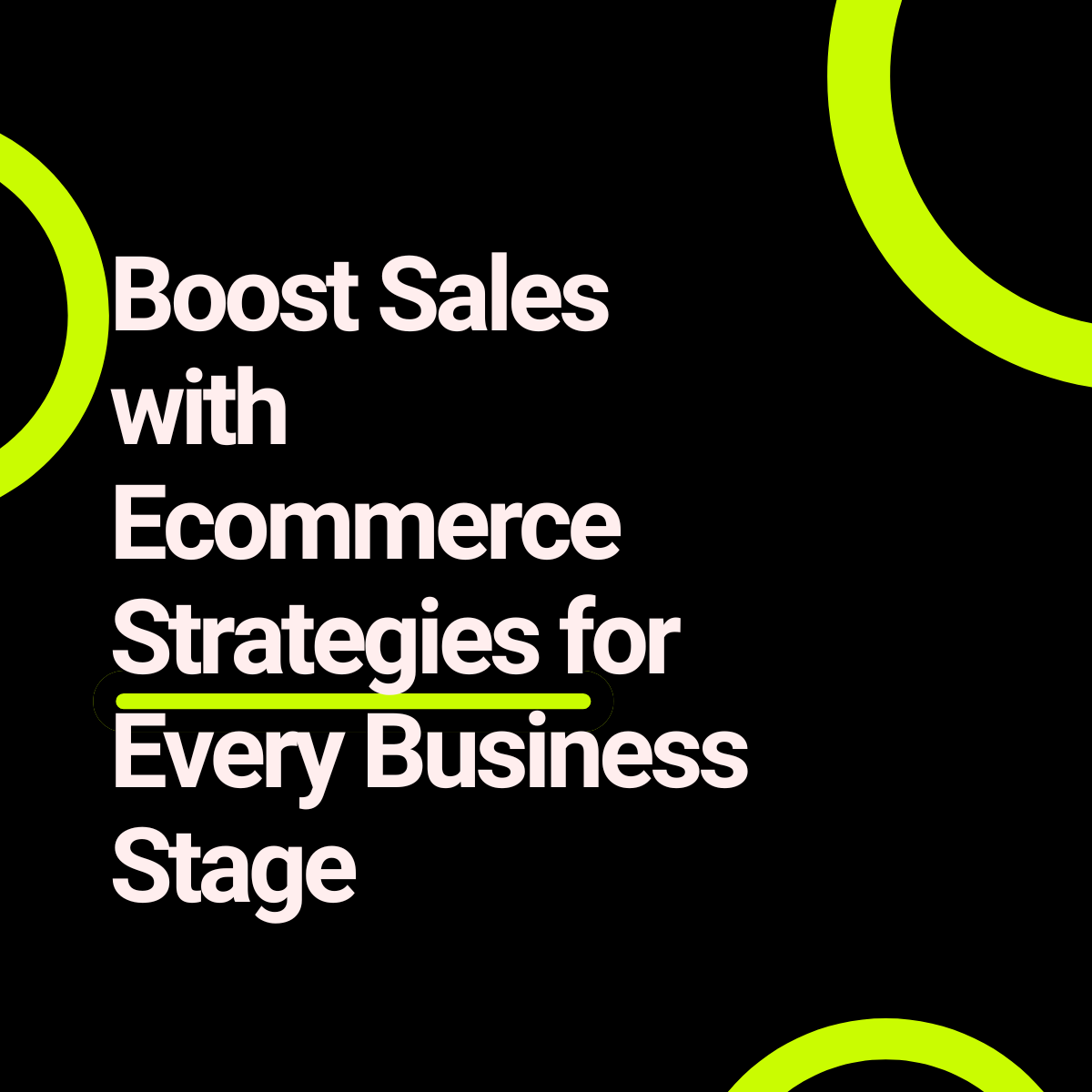In today’s competitive market, businesses must adopt effective ecommerce strategies to boost sales and achieve sustainable growth. This comprehensive guide will provide you with actionable insights for every stage of your business, ensuring you stay ahead of the competition.
1. Introduction
Ecommerce has revolutionized how businesses operate, providing opportunities to reach global audiences and increase sales. However, succeeding in the ecommerce landscape requires a strategic approach tailored to your business’s stage of development. This article outlines the essential strategies you need to implement at each stage to maximize your ecommerce potential.
2. Early-Stage Strategies
Market Research
Market research is crucial for understanding your target audience, identifying market gaps, and developing a competitive advantage. Key steps include:
- Identifying Target Audience: Determine the demographics, preferences, and pain points of your potential customers.
- Analyzing Competitors: Study your competitors’ strengths and weaknesses to identify opportunities for differentiation.
- Validating Product Ideas: Use surveys, focus groups, and online forums to gather feedback on your product ideas.
Brand Development
Building a strong brand sets the foundation for long-term success. Focus on the following elements:
- Brand Identity: Develop a unique logo, color scheme, and tagline that resonate with your target audience.
- Brand Voice: Craft a consistent and authentic tone for your communications.
- Brand Story: Create a compelling narrative that highlights your mission, values, and vision.
Website Optimization
An optimized website is essential for providing a seamless user experience and improving search engine rankings. Key aspects include:
- User Experience (UX): Ensure your website is easy to navigate, visually appealing, and mobile-friendly.
- Search Engine Optimization (SEO): Optimize your site for relevant keywords, improve page load speed, and use meta tags effectively.
- Security: Implement SSL certificates and secure payment gateways to protect customer data.
3. Growth-Stage Strategies
Customer Acquisition
Attracting new customers is vital for scaling your business. Effective customer acquisition strategies include:
- Content Marketing: Create valuable content that addresses your audience’s needs and positions your brand as an industry authority.
- Social Media Marketing: Utilize platforms like Facebook, Instagram, and LinkedIn to engage with your audience and promote your products.
- Paid Advertising: Use Google Ads, Facebook Ads, and other PPC campaigns to reach a wider audience.
Conversion Rate Optimization (CRO)
Increasing your conversion rate ensures that more visitors turn into paying customers. Focus on the following techniques:
- A/B Testing: Experiment with different headlines, images, and calls to action to identify what works best.
- User Reviews and Testimonials: Display customer reviews and testimonials to build trust and credibility.
- Simplified Checkout Process: Reduce friction in the checkout process by minimizing form fields and offering multiple payment options.
Product Expansion
Expanding your product line can attract new customers and increase sales. Consider the following strategies:
- Market Research: Identify gaps in the market and potential customer needs.
- Supplier Relationships: Build strong relationships with suppliers to ensure quality and reliability.
- Testing New Products: Launch new products on a small scale to test their viability before full-scale production.
4. Maturity-Stage Strategies
Customer Retention
Retaining existing customers is more cost-effective than acquiring new ones. Implement these retention strategies:
- Loyalty Programs: Reward repeat customers with discounts, points, or exclusive offers.
- Personalized Marketing: Use customer data to create personalized email campaigns and product recommendations.
- Exceptional Customer Service: Provide timely and effective customer support to resolve issues and maintain satisfaction.
Diversification
Diversifying your product range and revenue streams can reduce risk and drive growth. Explore these options:
- New Product Lines: Introduce complementary products to your existing offerings.
- Subscription Services: Offer subscription-based models for recurring revenue.
- Affiliate Marketing: Partner with affiliates to promote your products and expand your reach.
Global Expansion
Expanding into international markets can significantly boost sales. Key considerations include:
- Market Research: Identify viable international markets and understand local consumer behavior.
- Localization: Adapt your website, product descriptions, and marketing materials to local languages and cultures.
- Logistics and Compliance: Ensure you have the infrastructure to handle international shipping and comply with local regulations.
5. Conclusion
Implementing the right ecommerce strategies at each stage of your business can significantly boost sales and drive long-term success. By focusing on market research, brand development, website optimization, customer acquisition, conversion rate optimization, product expansion, customer retention, diversification, and global expansion, you can stay ahead of the competition and achieve sustainable growth.

